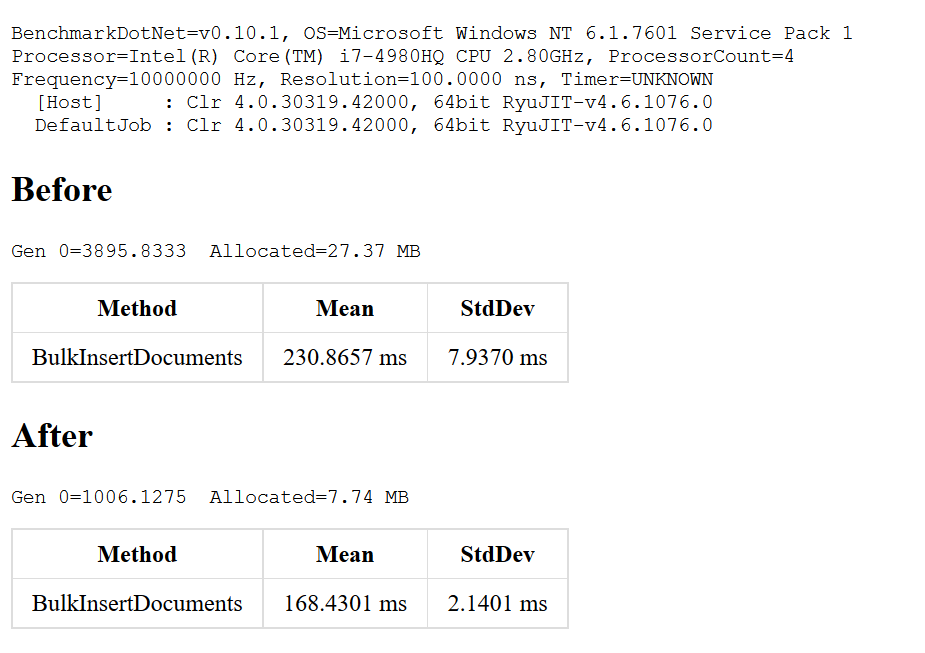Performance matters
This post has been imported from my previous blog. I did my best to parse XML properly, but it might have some errors.
If you find one, send a Pull Request.
TL;DR
This is a short follow-up post about Marten’s performance. It shows that saved allocations are not only about allocations and memory. It’s also about you CPU ticks, hence the speed of your library.
Moaaaaar performance !
Let me present you three pictures comparing performance before and after removing a lot of allocations. They were provided by Jeremy after benchmarking my PRs to Marten. My work was purely focused on allocations, but additionally, as shown below, it improved Marten’s speed of execution.
Events
The speed improvement isn’t that significant, but please take a look at the allocated bytes. Now it takes much less memory required before

Documents
The new insert is 10% faster and takes much less memory than before.

Bulk inserts
Here, after [enabling npgsql library to accept ArraySegment

Summary
When working on a library or a tool it’s good to think about performance and memory consumption. Even in a managed Garbage Collected world, using pooling for buffers or objects at all might not only reduce a memory consumption but also improve the overall speed of your creation.


